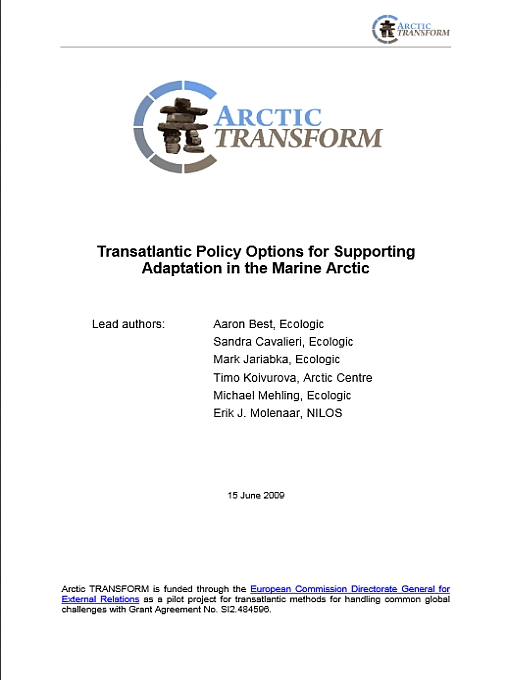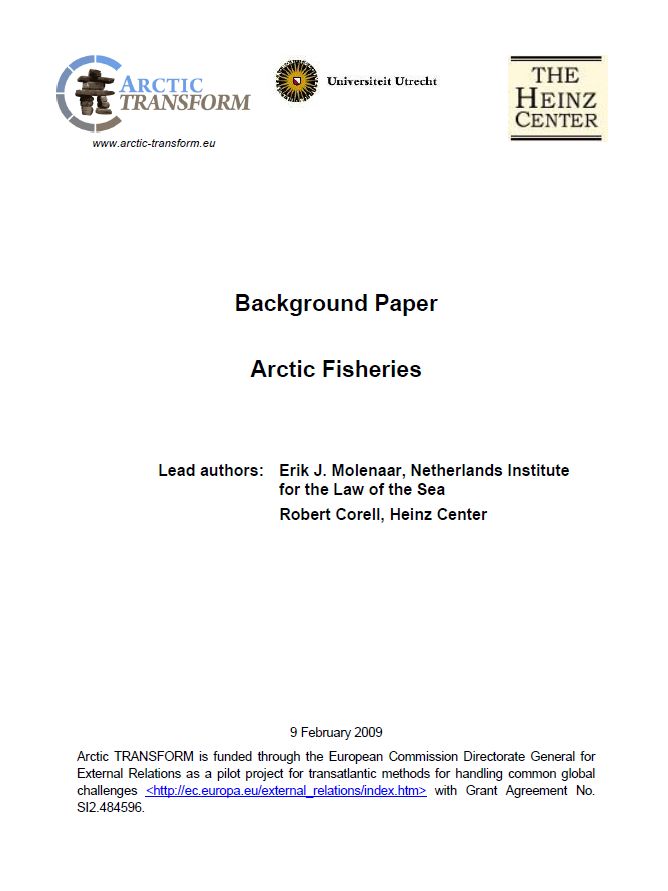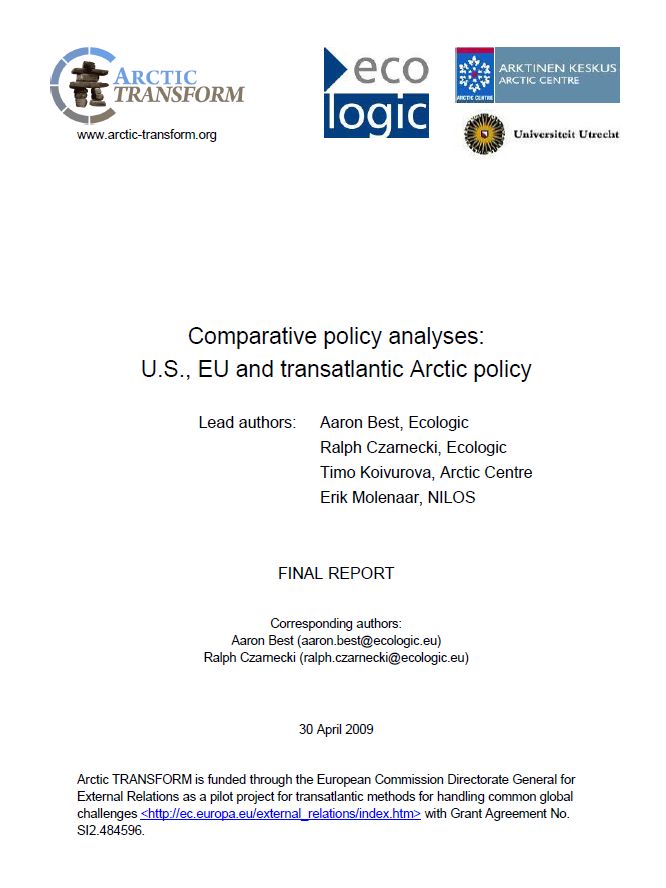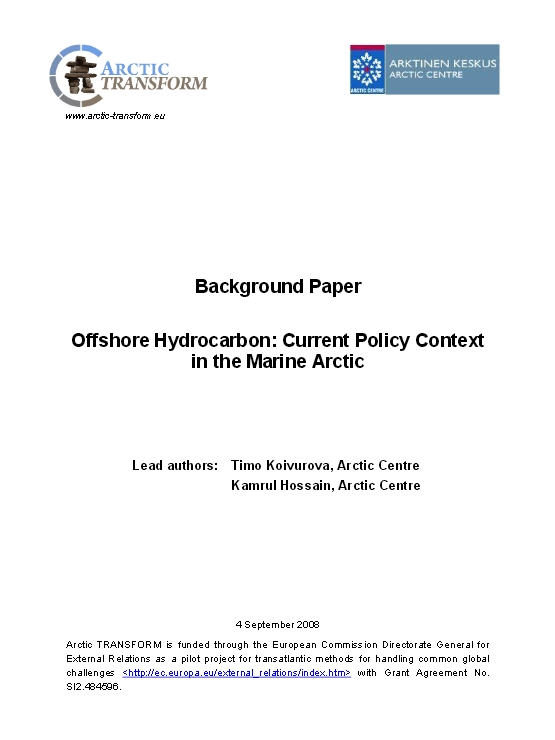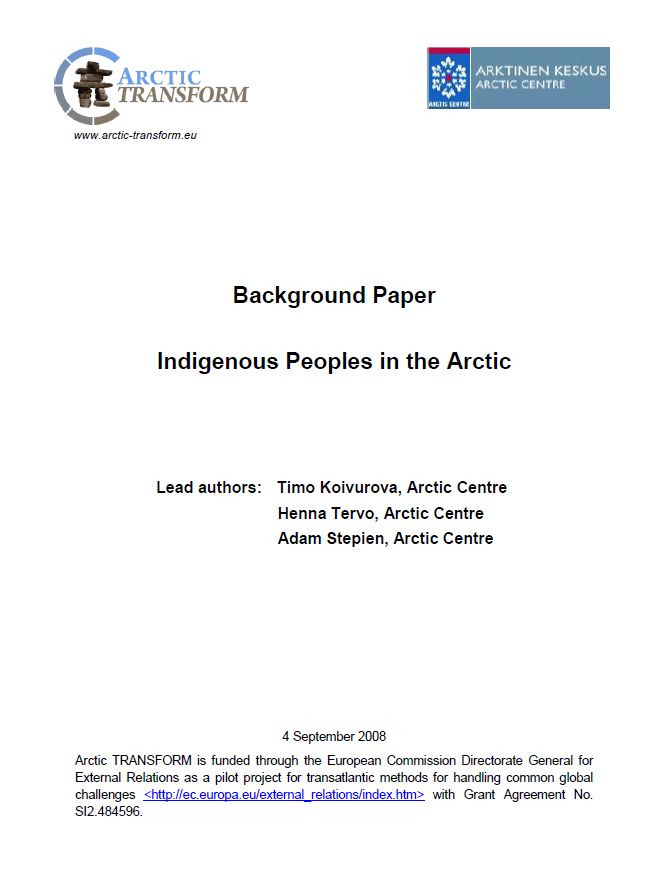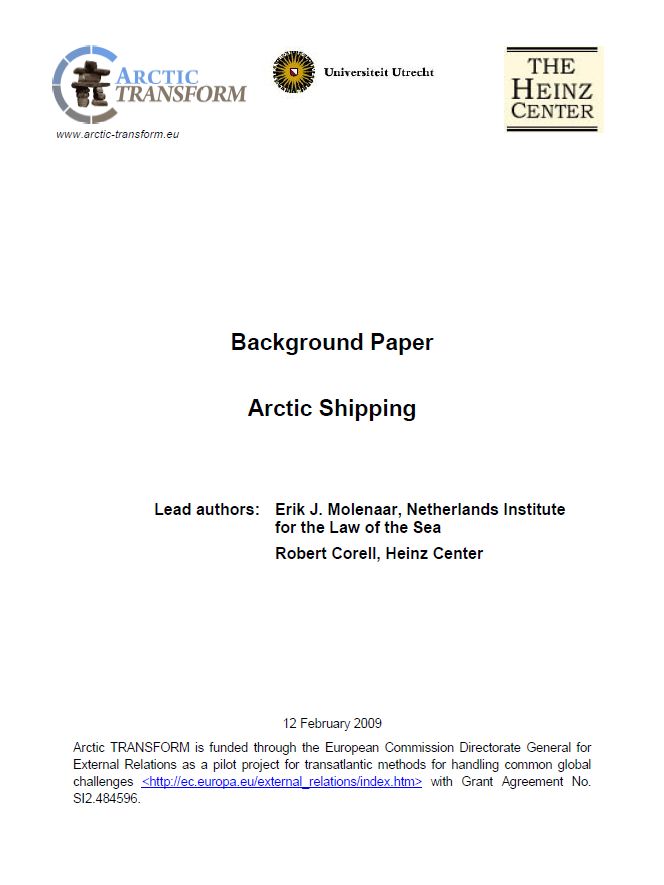
Arctic Shipping
- Publication
- Citation
Molenaar, Erik J. and Robert Corell 2009: Arctic Shipping. Ecologic Institute, Berlin.
Current Arctic marine shipping is mainly intra-Arctic. Since 2000, there have only been a few trans-Arctic voyages in summer for science and tourism across the Northwest Passage and the Northern Sea Route. The main consequence of climate change for Arctic marine shipping is contained in the Arctic Climate Impact Assessment (ACIA)'s key finding that "reduced sea ice is very likely to increase marine transport and access to resources". This background paper, prepared by Erik J. Molenaar and Robert Corell for the Arctic TRANSFORM project, focuses on intra-Arctic and trans-Arctic marine shipping in the Arctic marine area.
Trans-Arctic marine shipping can take place by means of various routes and combinations of routes. Two of these routes are the Northwest Passage and the Northern Sea Route. As a consequence of the accelerated melting of Arctic sea-ice, however, the Central Arctic Ocean Route may soon be an option as well. The most suitable course of this latter route will probably vary greatly from year to year. These annual variations may lead to various combinations of the Central Arctic Ocean Route on the one hand and the Northwest Passage and Northern Sea Route on the other hand. It is finally important to note that all trans-Arctic marine shipping must pass through the Bering Strait, thus making it a ‘choke point’.




